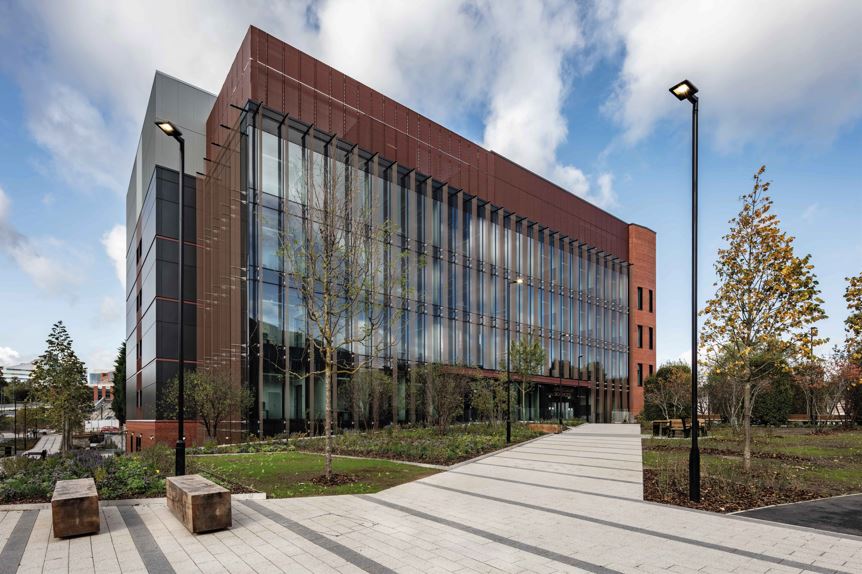
Flagship new university building with groundbreaking sustainability features designed by international MEP consultancy CPW has been handed over to the University of Birmingham.
The £80m Molecular Sciences Building will be the base for more than 500 scientists leading the field in world-class research in chemical, environmental and biomolecular sciences. Innovative technology and a range of sustainable solutions have been used throughout the design and construction of the 11,250 sqm²phase 1 of the masterplan, now home to cutting-edge laborotories including 171 high-efficiency fume-cupboards, as well as lecture rooms, offices and collaborative spaces. An experienced design team has collaborated effectively to help the building achieve BREEAM Excellent accreditation and an EPC A [14] rating. The digital-first project includes an impressive two-storeyenergy centre, created on the edge of the site by CPW to mitigate the impact vibrations on the sensitive experiments and research to be undertaken. The central design achieves a desire for ahighly logical building organisation that is focused around an optimised laboratory zone and maximising efficiency for ventilation services.
CPW has also used pioneering heat recovery technology to reduce the building’s energy waste and consumption, with the latest air source heat pumps cutting carbon emissions by as much as 70%. Antonios Agapakis, director at CPW, said: “This has been a fantastic opportunity to demonstrate our skills in bringing progressive and sustainable buildings to life, which will have a positive effect on the environment and our net zero carbon ambitions. “It has been a major project involving in-depth collaboration with a number of partners and the result is a world-class facility that can take the university’s research in these pioneering fields to new levels.”
The building incorporates many sustainability measures, including:
• Renewable electrical energy generation via a rooftop photovoltaic system - this supplies phase 1 with nearly 84,000 kWh of sustainable energy per year
• Maximised heat recovery efficiency in ventilation services around the laboratory zone - to reduce the building’s energy waste and consumption
• Optimised floorplates and riser geometry to allow efficient air movement - reducing material and embodied carbon within the mechanical elements
• Super-efficient air-source heat pumps to decarbonise the building’s energy supply - and providehot water through reusing heat removed from its cooling load
• LED lighting with smart controls and sensors to reduce demand and monitor daylight within rooms - using around 75% less energy, extending the life of fittings and reducing the carbon needed for repairs.
The ambitious first phase has been carried out by Morgan Sindall Construction working with CPW, Associated Architects, Ramboll and MGAC.